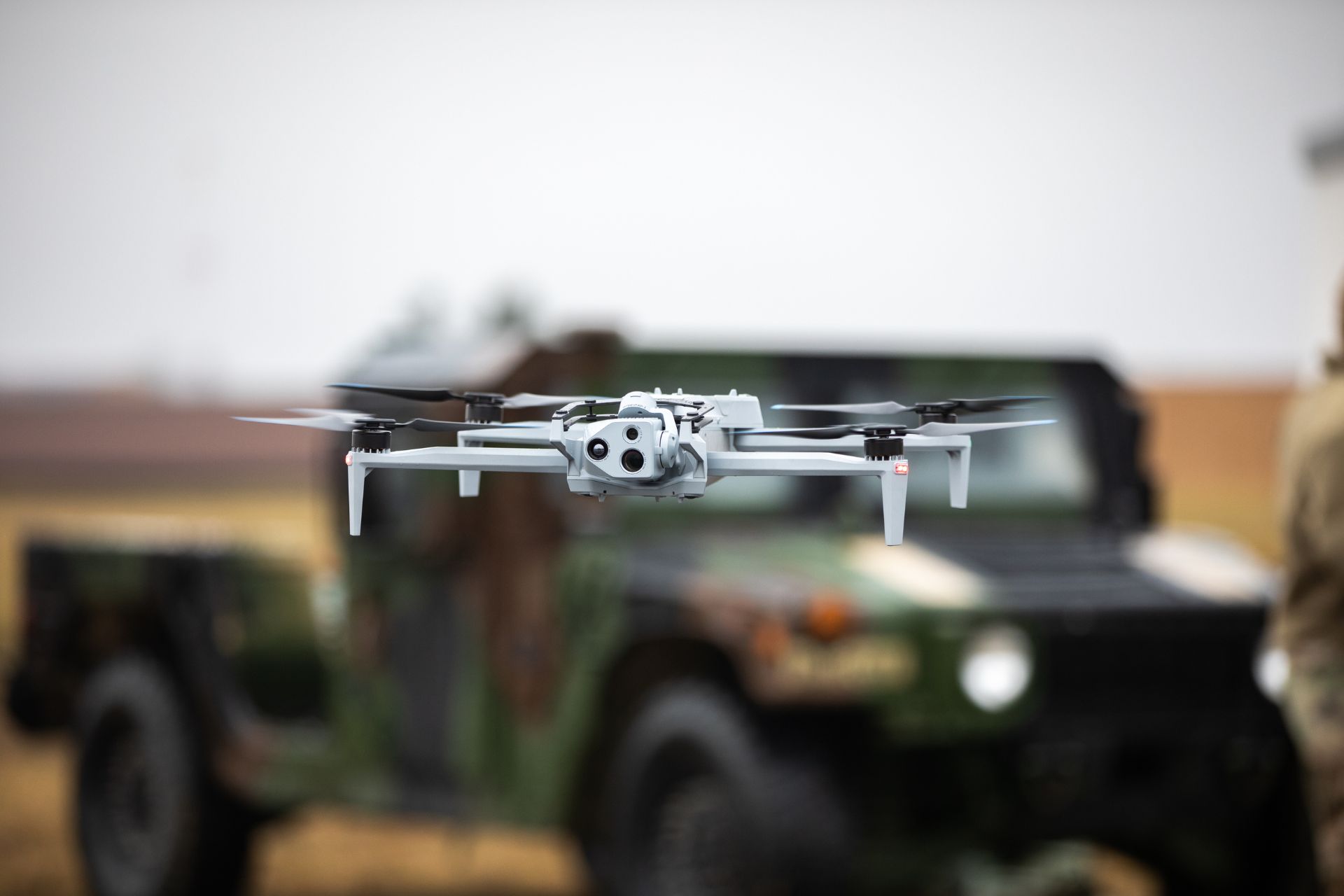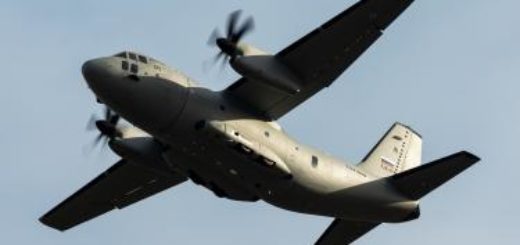US Army Deploys X10D Drone for Rapid and Stealthy Reconnaissance Missions

{loadposition bannertop}
{loadposition sidebarpub}
On May 5, 2025, Skydio announced the delivery of the first batch of X10D drones to the U.S. Army under Tranche 2 of the Short-Range Reconnaissance (SRR) program. This marks the introduction of the first officially delivered system within this phase of the short-range tactical drone program and represents a significant step in the modernization of the U.S. Army’s intelligence, surveillance, and reconnaissance (ISR) capabilities. The systems were delivered within an exceptional five-day timeframe, allowing a Transforming in Contact (TiC) unit preparing for deployment to be equipped with autonomous reconnaissance tools tailored for contested environments.
Follow Army Recognition on Google News at this link
Designed to deliver real-time intelligence at the squad or platoon level, the X10D offers a 30-minute flight time and a range of 3 to 5 kilometers, suitable for dismounted patrols and close-range reconnaissance. (Picture source: US DoD)
This announcement comes as the U.S. ground forces continue to invest heavily in next-generation tactical drones across all levels, from small combat teams to battalion commands. As early as November 2024, soldiers from the 317th Brigade Engineer Battalion, part of the 3rd Brigade Combat Team of the 10th Mountain Division, conducted initial field training near Mihail Kogălniceanu Air Base in Romania with the Army’s new short- and medium-range reconnaissance systems, namely the Skydio drone (SRR) and the GhostX (MRR). These exercises, designed to develop operator proficiency with drones deployable in under ten minutes, marked a key step in integrating these technologies into operational use.
The Skydio X10D aligns closely with the ongoing doctrinal shift toward drone-supported combat operations. Designed to deliver real-time intelligence at the squad or platoon level, the X10D offers a 30-minute flight time and a range of 3 to 5 kilometers, suitable for dismounted patrols and close-range reconnaissance. It is complemented by the GhostX system, which offers a range of up to 25 kilometers with an extended kit and provides ISR support at the battalion level.
However, the X10D goes well beyond the initial SRR specifications. It is equipped with a 48MP telephoto camera and a Teledyne FLIR Boson+ thermal sensor, capable of detecting concealed targets by day or night and identifying subtle thermal variations at the pixel level. These features are particularly relevant for units operating in dense, urban, or rugged terrain where threats are often hidden. Its onboard artificial intelligence enables the drone to maintain mission continuity in the event of GPS denial or electromagnetic interference, an increasingly common operational challenge, notably observed in Ukraine.
X10D’s ability to operate without GPS relies on proprietary algorithms that analyze its surroundings in real time to maintain positioning. Additional features include 360-degree obstacle avoidance, an open architecture allowing third-party payload and controller integration, and enhanced cybersecurity built into the system from the chipset to the firmware. This level of security is critical to counter electronic warfare threats and safeguard tactical data flows.
One of the key enablers of this rapid delivery is Skydio’s industrial capacity. Its Hayward, California facility can assemble a drone in just nine minutes and produce over 1,000 units per month, with scalability for increased demand. The company recently marked the production of its 55,000th drone, underscoring the maturity of its manufacturing operations and alignment with the Pentagon’s objective of secure, domestic production. At a time when reliance on foreign suppliers, particularly Chinese manufacturers, raises strategic concerns, Skydio presents a viable U.S.-based alternative.
To date, 132 soldiers from the 3rd Brigade of the 10th Mountain Division have been trained on the Skydio system. This broad training initiative reflects the Army’s intent to generalize the use of these drones across maneuver units. Additional exercises are scheduled at the Joint Multinational Readiness Center (JMRC) in Germany to evaluate performance in multinational operational scenarios. Feedback from these deployments will inform future adjustments to the system’s software, user interface, and operational procedures.
Beyond the technical features, the delivery of these drones reflects a deeper shift: reconnaissance and tactical decision-making are being pushed down to the lowest operational levels. By integrating drones like the X10D at the squad level, the U.S. Army enhances unit autonomy while improving its ability to detect and engage threats without exposing personnel. This approach responds to the evolving battlespace environment, increasingly saturated with sensors and shaped by the speed of information processing.
The delivery of the first Skydio X10D drones under Tranche 2 of the SRR program highlights the convergence of technological innovation, sovereign manufacturing, and doctrinal adaptation. By offering advanced, secure, modular, and rapidly deployable close-range reconnaissance capabilities, the X10D addresses the operational needs of U.S. ground forces faced with technologically capable adversaries. This system may become a central component of the Army’s future tactical ISR approach and serve as a reference for allied forces encountering similar operational challenges.

{loadposition bannertop}
{loadposition sidebarpub}
On May 5, 2025, Skydio announced the delivery of the first batch of X10D drones to the U.S. Army under Tranche 2 of the Short-Range Reconnaissance (SRR) program. This marks the introduction of the first officially delivered system within this phase of the short-range tactical drone program and represents a significant step in the modernization of the U.S. Army’s intelligence, surveillance, and reconnaissance (ISR) capabilities. The systems were delivered within an exceptional five-day timeframe, allowing a Transforming in Contact (TiC) unit preparing for deployment to be equipped with autonomous reconnaissance tools tailored for contested environments.
Designed to deliver real-time intelligence at the squad or platoon level, the X10D offers a 30-minute flight time and a range of 3 to 5 kilometers, suitable for dismounted patrols and close-range reconnaissance. (Picture source: US DoD)
This announcement comes as the U.S. ground forces continue to invest heavily in next-generation tactical drones across all levels, from small combat teams to battalion commands. As early as November 2024, soldiers from the 317th Brigade Engineer Battalion, part of the 3rd Brigade Combat Team of the 10th Mountain Division, conducted initial field training near Mihail Kogălniceanu Air Base in Romania with the Army’s new short- and medium-range reconnaissance systems, namely the Skydio drone (SRR) and the GhostX (MRR). These exercises, designed to develop operator proficiency with drones deployable in under ten minutes, marked a key step in integrating these technologies into operational use.
The Skydio X10D aligns closely with the ongoing doctrinal shift toward drone-supported combat operations. Designed to deliver real-time intelligence at the squad or platoon level, the X10D offers a 30-minute flight time and a range of 3 to 5 kilometers, suitable for dismounted patrols and close-range reconnaissance. It is complemented by the GhostX system, which offers a range of up to 25 kilometers with an extended kit and provides ISR support at the battalion level.
However, the X10D goes well beyond the initial SRR specifications. It is equipped with a 48MP telephoto camera and a Teledyne FLIR Boson+ thermal sensor, capable of detecting concealed targets by day or night and identifying subtle thermal variations at the pixel level. These features are particularly relevant for units operating in dense, urban, or rugged terrain where threats are often hidden. Its onboard artificial intelligence enables the drone to maintain mission continuity in the event of GPS denial or electromagnetic interference, an increasingly common operational challenge, notably observed in Ukraine.
X10D’s ability to operate without GPS relies on proprietary algorithms that analyze its surroundings in real time to maintain positioning. Additional features include 360-degree obstacle avoidance, an open architecture allowing third-party payload and controller integration, and enhanced cybersecurity built into the system from the chipset to the firmware. This level of security is critical to counter electronic warfare threats and safeguard tactical data flows.
One of the key enablers of this rapid delivery is Skydio’s industrial capacity. Its Hayward, California facility can assemble a drone in just nine minutes and produce over 1,000 units per month, with scalability for increased demand. The company recently marked the production of its 55,000th drone, underscoring the maturity of its manufacturing operations and alignment with the Pentagon’s objective of secure, domestic production. At a time when reliance on foreign suppliers, particularly Chinese manufacturers, raises strategic concerns, Skydio presents a viable U.S.-based alternative.
To date, 132 soldiers from the 3rd Brigade of the 10th Mountain Division have been trained on the Skydio system. This broad training initiative reflects the Army’s intent to generalize the use of these drones across maneuver units. Additional exercises are scheduled at the Joint Multinational Readiness Center (JMRC) in Germany to evaluate performance in multinational operational scenarios. Feedback from these deployments will inform future adjustments to the system’s software, user interface, and operational procedures.
Beyond the technical features, the delivery of these drones reflects a deeper shift: reconnaissance and tactical decision-making are being pushed down to the lowest operational levels. By integrating drones like the X10D at the squad level, the U.S. Army enhances unit autonomy while improving its ability to detect and engage threats without exposing personnel. This approach responds to the evolving battlespace environment, increasingly saturated with sensors and shaped by the speed of information processing.
The delivery of the first Skydio X10D drones under Tranche 2 of the SRR program highlights the convergence of technological innovation, sovereign manufacturing, and doctrinal adaptation. By offering advanced, secure, modular, and rapidly deployable close-range reconnaissance capabilities, the X10D addresses the operational needs of U.S. ground forces faced with technologically capable adversaries. This system may become a central component of the Army’s future tactical ISR approach and serve as a reference for allied forces encountering similar operational challenges.





